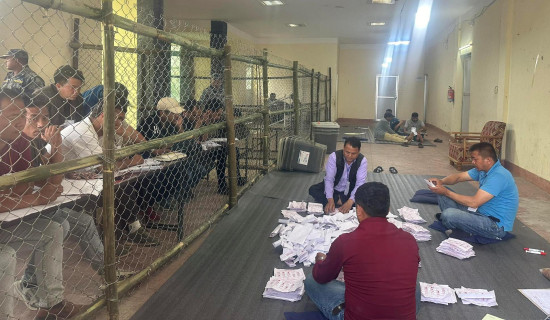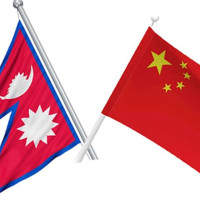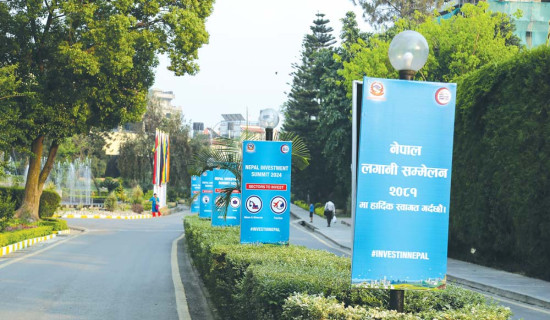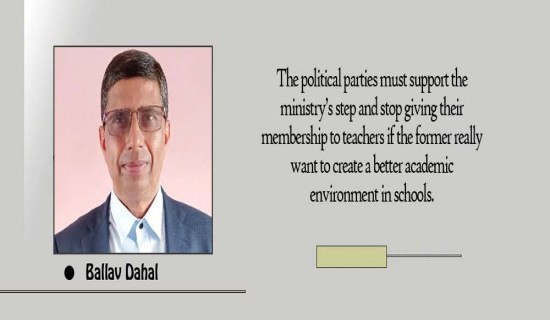- Tuesday, 30 April 2024
A Window To Nepali Economy
The last two decades have been highly turbulent for Nepal, as the country has witnessed epoch-making metamorphoses as well as unprecedented disasters. The country abolished the two and a half-century-old monarchical system and declared itself a republic, and it also adopted the federal system of governance with three levels of government. Two powerful earthquakes rocked the country, killing about 9,000 people in the hills and mountains and damaging about a million houses. It also faced an economic disaster caused by the earthquake and worsened by the Indian blockade, which lasted for six months. Meanwhile, Nepal elected two Constituent Assemblies to write the federal constitution and conducted two elections each for the federal and provincial parliaments and local bodies.
But these achievements and a couple of jerks couldn't make a visible impact on the national economy or the lives of common Nepalis. Since the country largely failed to create jobs, it experienced a massive exodus of youth. For many, this should be a major worry for the government and policymakers. But migrant workers are the ones who are helping to run the country's economy. Nepal's international trade, which almost reached Rs. 2 trillion in the post-COVID year, is financed by its hard-earned foreign currency. Of late, the government and the central bank have been making claims for improvements in the economy on the basis of healthy foreign exchange reserves. But the country has recurrently failed to increase its agricultural and industrial production and balance foreign trade. Its exports are not sufficient to finance the imports of petroleum products.
Meanwhile, Nepal had accepted most of the conditions set forth by the donor countries and agencies. A large chunk of the foreign financial support goes out of the country in the name of consulting, technical assistance, and foreign experts. Foreign support has played a nascent role in poverty alleviation in the country. Likewise, the annual budget of the government is poorly implemented, and capital expenditure never meets the target. The country adopted economic liberalism, which ruined the public enterprises instead of making them more productive and competitive. Farmers are exploited by the middlemen, and consumers have been facing high inflation for the past many years.
This is the picture of the Nepali economy portrayed by the late Dr. Govinda Bahadur Thapa in the book 'Arthatantra ko Ankhijhyal', a collection of articles on economic issues and policies of the country that was published posthumously by the foundation established in his name. Dr. Thapa, who served as the executive director at the Nepal Rastra Bank, senior economic advisor at the Ministry of Finance, alternate executive director of the Asian Development Bank, and member of various committees on economic and development issues and government agencies, has exhibited a profound understanding of the economies of Nepal and the world.
The 400-page book is divided into four sections: theoretical, contemporary, budget, and miscellaneous. In 61 articles, Dr. Thapa has finely discussed the situation of Nepal in the areas of development, employment, industry, agriculture, foreign aid, trade balance, domestic production, poverty alleviation, revenue and expenditure, cooperatives, economic transformation, foreign loans, banking and finance, periodic planning, and post-quake reconstruction.
Written in everyday language without including heavy jargon and technical words of economics, the book helps you understand the national economy of Nepal, its potentials, as well as barriers to development. Dr. Thapa's in-depth knowledge of the financial system, international trade, and economic philosophy has been exhibited in the book. It also has articles on the philosophy of economic inequality and the way out, poverty alleviation, sources of government revenue, macroeconomic policy, major economic systems of the world, the role of the private sector in the economy, the relevancy of cooperatives, inequalities created by liberalism, and the capitalist's perspective on labour. The author has not only presented a long list of problems and crises faced by Nepal but also presented possible solutions and ways out of the crisis. If you want to understand simple everyday economic issues like the rules on minting money, causes of inflation, factors of socio-economic status, features of the economic system adopted by Nepal, and the impact of remittance, 'Arthatantrako Aankhijhyal' will be a useful reading.
Dr. Thapa seems more critical of unplanned economic liberalisation and privatisation of public companies as well as acceptance of donor's conditions like shutting down food depots in remote areas, hiking the charges on electricity, telephone, and drinking water, and cancelling subsidies on fertilisers and other agricultural inputs, which ultimately added burden to the people. However, in some of the articles, he has shown high appreciation for the economic and development policies of the governments led by the CPN-UML in the past while criticising the moves by the government led by the Nepali Congress. Similarly, he has been highly critical of the CPN (Maoist Centre) and maintained that its policies are highly influenced by the policies of the UML, and it failed to offer innovative programmes that would have transformed the national economy of the country. Although this part of the book seems to be about imbalances, Dr. Thapa has cited the clauses of the budget of the governments led by the different political parties to substantiate his opinion. Yet, you might disagree with him at times when he criticises the liberalisation process and offers all praise to the leftist government.
However, the book is the first in terms of discussing Nepali economics from every perspective. The articles in the book are readable and easy to grasp. It can be equally useful to students of economics, policymakers and planners, and people who want to have a better understanding of the Nepali economy.
(The author is a journalist at The Rising Nepal.)
















